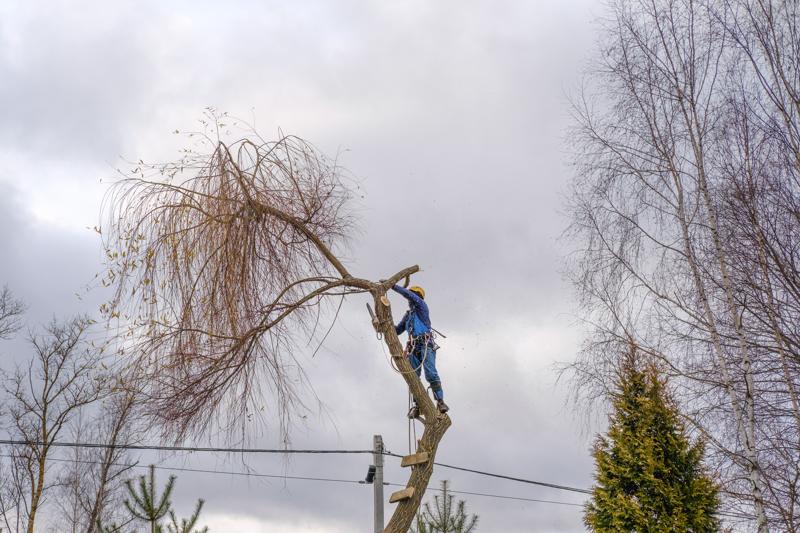The Top Indicators That a Tree Requires to be Removed

Tree removal is a complex and possibly dangerous job. If a tree is dying, diseased, or at risk of falling, it could need to be removed to prevent damage to property and guarantee safety. But how do you tell when a tree must be removed? We’ll take you through the signs to watch out to and assist you decide when it’s time to call in the professionals.
Dead or dying trees
One of the most evident signs that a plant needs to be removed is when it is dead or dying. Dead trees lack leaves and could appear dead. If a tree is without leaves or any signs of new growth, it is likely dead. Additionally, the bark of dead trees might be dry, cracked or peeling.
Diseased Trees
Trees with diseases can pose a threat to other trees and plants within the vicinity. The most common signs of disease on trees are the appearance of yellowing leaves, wilted branches, and mushrooms growing at the bottom or the trunk. If you think your tree may be diseased it is important to get it checked by a certified arborist.
Leaning Trees
TreesLeaning trees to one side can be a sign that the root system is failing and the tree may be at risk of falling. To determine if a leaning tree is at risk, look for cracks or breaks within the trunk and look into the soil at the base of the tree. If you see any of these indicators it is recommended to examine the tree by an arborist.
Overhanging Branches
Trees with overhanging branches which are located close to power lines or buildings could pose a threat to property and safety. If you have concerns about branches hanging overhanging you should get the tree assessed by an arborist who will determine whether removal or pruning is required.
FAQs
How can I tell whether a tree is dead?
An individual tree can be said to be to be dead if it does not have leaves and no evidence of new growth. The bark of a dead tree could be cracked, dry or peeling.
What are the signs of a dying tree?
The most common signs of disease on trees include the appearance of yellowing leaves, wilted branches, and mushrooms growing at the at the base of the tree.
Is it safe to take down a tree yourself?
Tree removal can be a complicated and potentially dangerous task. It is best to leave the task to the experts to ensure the safety of yourself and others.
Conclusion
When it comes to tree removal, it’s important to be aware of the indicators that indicate that a tree requires to be removed. By being aware of the indications of dying or dead trees, diseased trees overhanging or leaning branches, you can take steps to ensure the safety of your property and the people who live around you. If you believe that the tree that is on your property requires removal do not hesitate to contact The Hills Tree Lopping for a professional evaluation. Our arborists are highly skilled and have the expertise and tools to handle all the tree removal requirements. Don’t risk your safety. If you suspect that there is a tree in your yard that must be removed, contact The Hills Tree Lopping today for a professional evaluation. Our experienced arborists will give you the peace of mind that comes with knowing your property is in safe with us. Call us now at 0480 024 203 to schedule an appointment.





















